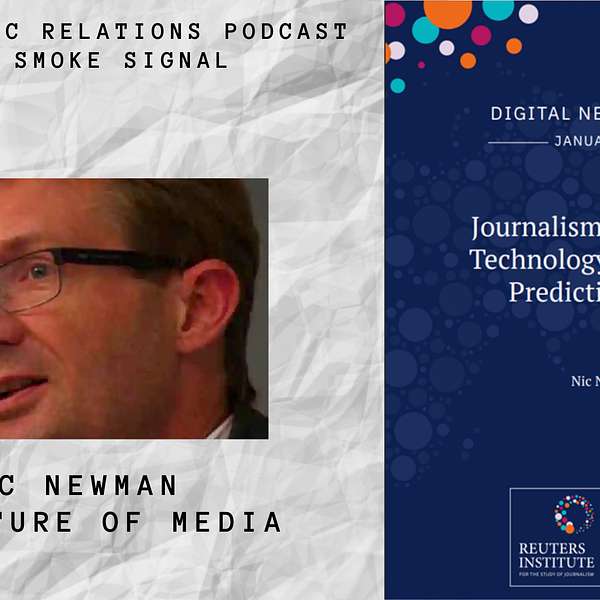
Smoke Signal, A Public Relations Podcast
Smoke Signal, A Public Relations Podcast
A Public Relations Podcast: Smoke Signal Episode 32 - Journalism, Media, and Technology Trends and Predictions 2022
PR and journalism have a long and deep symbiotic relationship. So in this first episode of Smoke Signal for 2022 I thought it timely to take a deep dive into the current state of journalism and predictions on how the media industry will continue to evolve in the year ahead.
The past two years has seen news media rise in importance and relevance as audiences turn to trusted sources for health and economic information. As we look forward to 2022 the question becomes what’s next?
Senior Research Associate at the Reuters Institute for the Study of Journalism, Nic Newman has studied trends in media and journalism for over a decade. He has just released his latest research paper, Journalism, Media, and Technology Trends and Predictions 2022 which looks at the state of the profession and the key challenges, and opportunities, for the year ahead.
The research encompassed 246 senior editors and publishing leaders from over 52 countries, including a number of senior leaders in Australia. Here’s a few highlights from the report that we discussed in this podcast.
Revenue models continue to evolve
In recent years revenue models have substantially changed. Where it used to be advertiser-focused it has shifted to be much more reader-lead in the form of subscriptions, memberships, donations and events.
The wider adoption of subscription formats for music (i.e. Spotify) and entertainment (i.e. Netflix) has paved the way for news media to more actively adopt this model. However, there is a limit to the number of subscriptions people are willing to pay for, and Nic believes we are getting towards that limit.
Generational divide
A real challenge for publishers is being able to engage audiences of all ages. 95% of all digital news subscriptions are paid by those over 30 years old.
Younger audiences consume news in very different ways. For example, those under 25 are unlikely to have brand loyalty; are more likely to be spending their time on social platforms like Tik Tok and Instagram etc; and they want convenience.
The role of journalist becomes ever more challenging
There’s a lot of noise on the media industry being in crisis, but in fact 60% of media leaders in the survey said revenues had increased over the past year. Only 8 per cent said revenue had fallen. That reflects the rise in subscriptions revenue and the bounce back of digital advertising as advertisers look to back trusted media brands.
Journalists on the front line are facing burnout - the relentless 24/7 news cycle; needing to work across ever more formats and outlets; and then on top of that the global pandemic and associated stress – addressing this is high on the media leader’s agenda for 2022.
Big tech and media
You can’t talk media without talking big tech. While there has been much made of the recent revenue sharing agreements that Google and Facebook have made with publishers around the world over the past year, the trouble with these according to Nic is that there is not much transparency around the deals and it was mostly the big media companies getting the lions share of the money.
This is not necessarily good for audiences; not good for innovation; not good for local news; and not good for competition. You also want to ensure media companies aren’t overly dependent on income from platforms as they need to be independent enough to robustly report on these same platforms.
The take-out for comms professionals
Smart brevity. In this world where there are so many different choices and people are short of time, how can you get your point across quickly, effectively. Using the right format at the right time.
